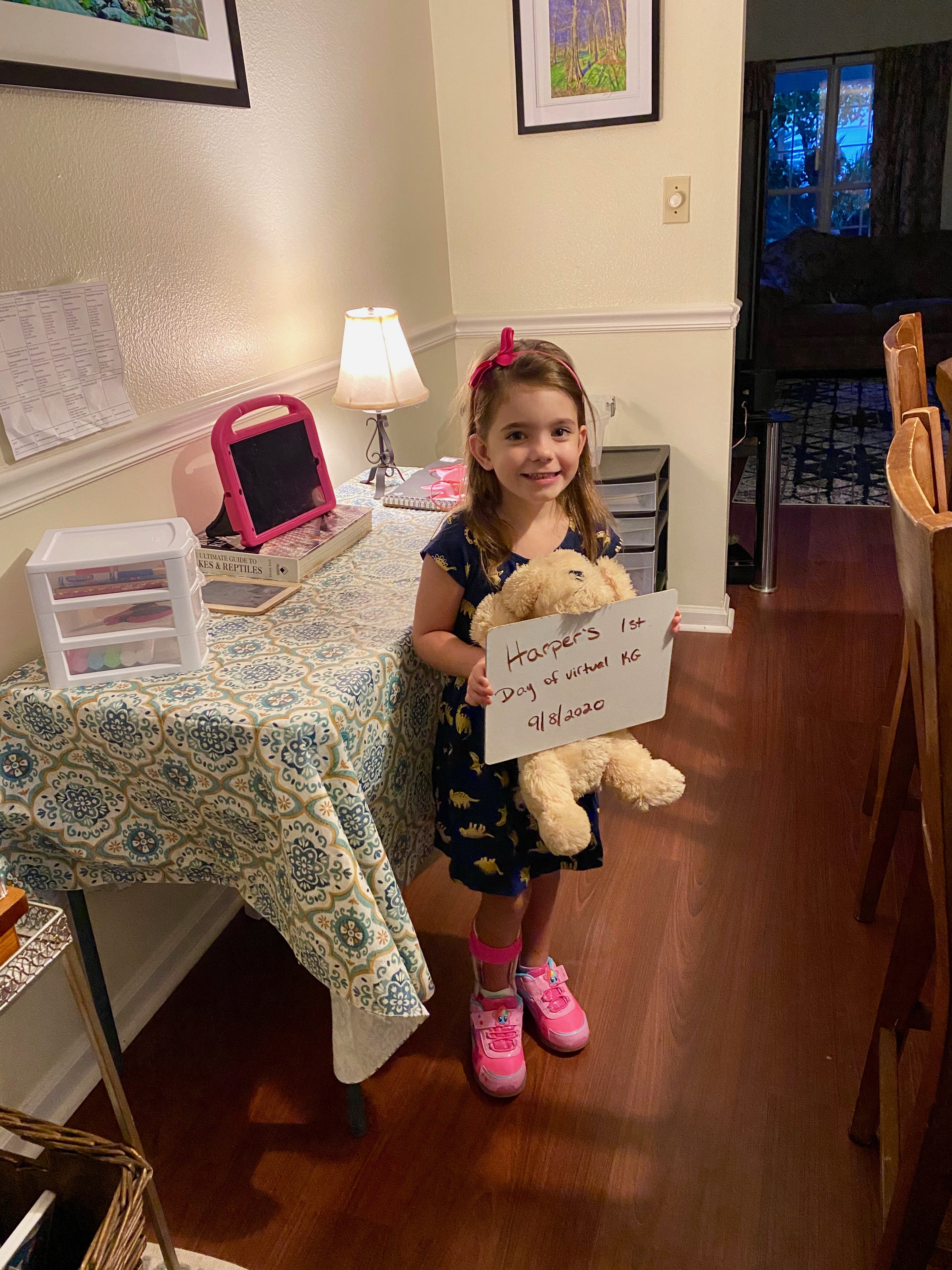When Katya noticed her five-year-old daughter, Harper, was walking on her toes and her gait was off, she knew to seek medical care at Tallahassee Memorial HealthCare (TMH). After a neurologist diagnosed Harper with mild Cerebral Palsy, she was referred to Ryan Price, DO, the region’s only pediatric orthopedic surgeon. He recommended a non-surgical treatment option called serial casting.
Serial casting is the process of putting on a cast and taking it off of an arm or leg every week for a period of several weeks. The goal is to stretch muscles to allow for better movement and range of motion over time. Before Dr. Price and the specially trained pediatric physical therapists were able to offer serial casting at TMH, families would have to travel hundreds of miles away to receive this treatment and care.
“Of course parents think it’s cute when their babies are walking on their toes, but it should be discouraged. If it continues past age two, children need to be evaluated to see whether they’re doing that because they want to or if they have to because their foot is too stiff. If it is too stiff, my first modality is a non-surgical therapy called serial casting,” explained Dr. Ryan Price, a pediatric orthopedic surgeon at Tallahassee Memorial. “Serial casting is a safe, effective and helpful treatment most commonly used to treat toe walking.”
Typical treatment plans look like the following:
- An initial evaluation by a physical therapist trained in serial casting is scheduled. This a 60 minute appointment.
- Each serial casting session lasts about 60-90 minutes. At the beginning of each session, our physical therapist will do a skin check, range of motion assessment and observational posture and gait analysis.
- Once the cast(s) are on, the child gets cast shoes and they’re modified as needed to achieve optimal gait and standing posture. The casts are removed by parents at home each week, the night before they return to their physical therapist for a new cast. Casts are changed weekly until the target and/or acceptable range of motion goals are achieved.
- Following serial casting, the child often requires ankle foot orthotics and/or night splints to maintain the achieved range of motion and proper posture and walking pattern. It may be recommended that the child also continue physical therapy for a time for further work on ankle strengthening and gait training. A home program is always critical to follow in order to maintain achieved improvements.
“Even while wearing the casts, it never slowed Harper down. She would play with friends, run all over the place, and it did not bother her at all,” said Katya. “And now that the casts are off, she is just thriving.”
To learn more about serial casting and the pediatric orthopedic surgery program at Tallahassee Memorial HealthCare, please visit TMH.ORG/KidsOrtho.

Harper Before Harper During Harper After!
